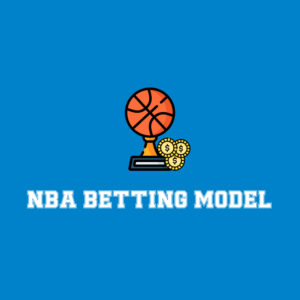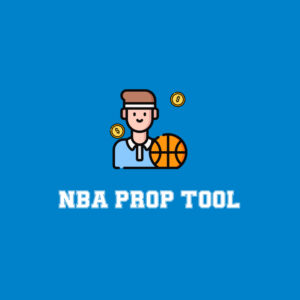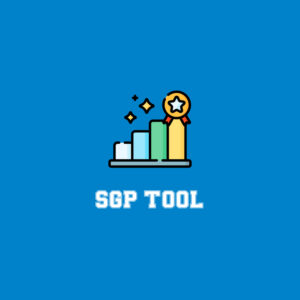
Before turning to specific players who may be potential drops, this article will explore the mechanics, and the potential advantages, of utilizing multiple potential player drops within a single FAAB string. As we move deeper into the season, this practice becomes increasingly useful, especially as FAAB budgets decline.
In the early part of the season, I almost always employ straightforward FAAB strings with a single potential player drop per string. For instance, if I wanted to drop Ryan Weathers for a starting pitcher, I would utilize a string with multiple potential adds, with descending bids, all dropping Weathers. For instance:
| Order | Add | Bid | Drop |
| 1 | David Festa | 100 | Ryan Weathers |
| 2 | Jose Quintana | 10 | Ryan Weathers |
| 3 | Hayden Wesneski | 5 | Ryan Weathers |
| 4 | JP Sears | 2 | Ryan Weathers |
As we get into the second half of the season, however, I periodically will employ two (and, on rare occasions, three) potential drops in a single FAAB string. For instance, last week, if fantasy managers generally were comfortable with their teams but desired Noelvi Marte or David Festa, they could have utilized a single string with two different drops. For instance:
| Order | Add | Bid | Drop |
| 1 | Noelvi Marte | 250 | Eugenio Suarez |
| 2 | David Festa | 75 | Ryan Weathers |
Thus, if desiring Marte or Festa but not wanting to spend up for both high-priced FAAB targets, the above string would drop Eugenio Suarez, a disappointing third baseman, for Marte, who plays the same position. If losing the Marte bid but winning Festa, the manager might prefer to drop a pitcher (in this example, the injured Weathers).
The deeper we get into the baseball season, the more important it is for fantasy managers to control their FAAB spending. For instance, modifying the above example, assume a manager wanted to try to acquire both Marte and Festa, but needed to limit the Festa bid if successful on the Marte bid. One way of accomplishing this strategy, while maintaining the above drops, would be to utilize two FAAB strings, as follows:
String 1
| Order | Add | Bid | Drop |
| 1 | Noelvi Marte | 250 | Eugenio Suarez |
| 2 | David Festa | 75 | Ryan Weathers |
String 2
| Order | Add | Bid | Drop |
| 1 | David Festa | 30 | Ryan Weathers |
Using these two strings allows the fantasy manager to target Marte at $250 in String 1 and, if failing to win him, utilize a $75 bid for Festa. If, however, the manager wins Marte in String 1, dropping Suarez, String 2, employing a lower ($30) bid for Festa with Weathers as the drop, would remain in play. This approach is far superior to utilizing separate strings with single drops and limiting the maximum bid for Marte and/or Festa because the fantasy manager is unsure whether either or both bids will be successful. Here, using the above approach, the manager can bid what he or she wants for Marte and then employ two different bids for Festa, with the higher one utilized if the Marte bid is unsuccessful and the lower one utilized if the Marte bid is successful. This flexibility is very helpful when targeting multiple higher-priced players but wishing to control total FAAB spent.
Now, assume a fantasy manager wanted to: (a) bid on both Marte and Festa; (b) bid less on Festa if winning Marte; (c) drop Suarez for a corner infielder even if not winning Marte; and (d) drop Weathers for a starting pitcher even if not winning Festa. This can be accomplished using three FAAB strings. For instance:
String 1
| Order | Add | Bid | Drop |
| 1 | Noelvi Marte | 250 | Eugenio Suarez |
| 2 | David Festa | 75 | Ryan Weathers |
| 3 | Connor Joe | 10 | Eugenio Suarez |
| 4 | Jake Bauers | 3 | Eugenio Suarez |
| 5 | Gavin Sheets | 1 | Eugenio Suarez |
String 2
| Order | Add | Bid | Drop |
| 1 | Davd Festa | 30 | Ryan Weathers |
| 2 | Jose Quintana | 10 | Ryan Weathers |
| 3 | Hayden Wesneski | 5 | Ryan Weathers |
| 4 | JP Sears | 2 | Ryan Weathers |
| 5 | Bailey Falter | 1 | Ryan Weathers |
String 3
| Order | Add | Bid | Drop |
| 1 | Connor Joe | 10 | Eugenio Suarez |
| 2 | Jake Bauers | 3 | Eugenio Suarez |
| 3 | Gavin Sheets | 1 | Eugenio Suarez |
In String 1, the primary goal is to win Marte for $250, dropping Suarez. If failing to win Marte, the manager tries to win Festa for $75, dropping Weathers. If that bid also fails, the manager hopefully replaces Suarez with one of three alternate corner infielders. Obviously, if the manager is determined to drop an injured or lousy player, additional targets can and should be utilized. When committed to dropping an injured player, I often will utilize FAAB strings that are 10-15 players long.
In the above example, assume that the manager wins Marte for $250 in String 1. In that case, Suarez is dropped, rendering String 3 – also dropping Suarez – null and void. String 2, dropping Weathers, remains alive, and the manager can utilize a lower bid on Festa ($30) than the bid used in String 1 ($75), reflecting the manager’s preference to bid less on Festa if winning Marte. String 3, targeting corner infielders other than Marte to replace Suarez, is needed in the event that the manager loses the $250 bid on Marte but wins the $75 bid on Festa in String 1. Under that scenario, Festa is acquired, and the dropping of Weathers renders the String 2 null and void. Importantly, however, because the successful bid for Festa ends String 1, there is a need to copy the remaining corner infielder bids into a separate string (String 3) to accomplish the replacement of Suarez.
The strategies described above – utilizing more than one drop within a single FAAB string – can be extremely useful as the season winds down and fantasy managers are trying to maximize their purchasing power in FAAB despite remaining budgets growing smaller and smaller. Importantly, however, when employing these strategies, double- and triple-check your strings to make sure the logic works, and unintended outcomes are avoided.
Some of the players who should at least be considered as potential drops this week are set forth below in the following two tables – the first includes hitters and the second includes pitchers. In addition to the player’s name, team and position, the tables include the player’s ownership percentage in the premier 15- and 12-team contests: the NFBC’s Main Event and Online Championship, respectively. Finally, the tables list my rankings as to how strongly – or not – I feel each particular player should be dropped in those 15-team and 12-team formats, respectively. The key to these rankings, from 0-4, is as follows:
- 0 = Do not drop
- 1 = Team context dependent; probably should not be dropped on most teams
- 2 = Team context dependent; compelling arguments to drop and not drop
- 3 = Team context dependent; probably should be dropped on most teams
- 4 = Drop
Potential Hitter Drops
| Name | Team | Position | Roster% (15tm) | 15tm Drop? | Roster% (12tm) | 12tm Drop? |
| Royce Lewis | MIN | 3B | 100% | 1 | 100% | 2 |
| David Hamilton | BOS | 2B/SS | 100% | 1 | 99% | 1.5 |
| Joey Meneses | WAS | 1B | 67% | 4 | 5% | 4 |
| Josh Jung | TEX | 3B | 95% | 2 | 95% | 3 |
| Connor Joe | PIT | 1B/OF | 65% | 2.5 | 46% | 3.5 |
| Jake McCarthy | ARI | OF | 95% | 1.5 | 77% | 2.5 |
| Josh Rojas | SEA | 2B/3B | 67% | 2 | 26% | 3 |
| Pete Crow-Armstrong | CHC | OF | 98% | 2 | 38% | 3 |
| Dylan Moore | SEA | 2B/3B/SS/OF | 67% | 3 | 40% | 4 |
| Luis Rengifo | LAA | 2B/3B/SS/OF | 100% | 0 | 100% | 0 |
| Josh Bell | MIA | 1B | 100% | 0.5 | 74% | 1.5 |
It is difficult not to feel badly for Royce Lewis. He is highly skilled but has trouble staying healthy. Earlier this week, Lewis went on the IL with a Grade 2 adductor strain. After missing two seasons due to two torn ACLs, Lewis more recently has missed time due to soft-tissue injuries to his oblique, hamstring, quad and adductor. The Grade 2 designation means the injury is more serious than first thought, and that Lewis likely will miss 3-6 weeks. Given that injury timeline and the fact that there are only 12 weeks remaining in the season, most players with similar injuries would be dropped. Lewis, however, is in the midst of a fantastic season when he has played. In 24 games, Lewis has 10 HR, 36 R+RBI, a .292 AVG, and a 1.039 OPS. To put that OPS in perspective, among players with as many plate appearances as Lewis, only Aaron Judge and Shohei Ohtani have a higher OPS. Whether to hold or drop Lewis is a very team- and league-specific evaluation. Lewis easily could miss half, or more, of the remaining season. There also are no guarantees that Lewis will remain this productive when he returns to action, or that he’ll even be able to stay on the field. Those concerns noted, Lewis has been incredibly productive when active, and fantasy managers able to stash him should consider doing so. Managers already carrying multiple stashes, however, may find it challenging to sacrifice remaining roster flexibility to stash Lewis for a long time, especially if other stashes are coming back sooner and/or fill positions of greater need.
David Hamilton of the Red Sox currently is fourth in all of MLB in stolen bases. Thus far, in limited playing time, Hamilton has been explosive, and in addition to swiping 24 bags (with only 1 caught stealing), Hamilton has 5 home runs, 48 R+RBI and is hitting a respectable .263. Frustratingly, Hamilton has only started three out of Boston’s last six games. It appears that, with the return of Masataka Yoshida, Ceddanne Rafaela now is starting the majority of games at shortstop, rendering Hamilton a part-timer. Hamilton is a team-dependent call in terms of holding or dropping. Right now, the playing time is limited, but all it takes is a single injury or slump for that to change. For fantasy managers with a strong need for stolen bases, Hamilton seems worth holding, at least in 15-team leagues. Even in a part-time role, Hamilton should contribute stolen bases and, if he regains a regular role, can be a real difference-maker in that category. Fantasy managers with higher priority stashes and/or a solid or better outlook in stolen bases can consider dropping Hamilton but may want to wait another week or two to see if his playing time improves.
After going 0-for-4 on Thursday, the Nationals demoted Joey Meneses to Triple-A. After bursting onto the scene in 2022 by hitting 13 home runs with a .324 average in 56 games, Meneses has struggled to provide league-average production. Meneses played 154 games in 2023 and, despite 98 additional games, hit the same 13 home runs he did in 2022, this time with a .275 average. While fantasy managers should have been somewhat skeptical about Meneses’ power coming into 2024, he had some appeal based on expectations of a solid batting average and secure playing time hitting in the middle of the Nationals lineup. Unfortunately for Meneses’ fantasy managers, those expectations have not been realized. In 76 games, Meneses has only 3 home runs and is hitting .231 with a lousy .597 OPS. While some of Meneses’ underlying metrics (such as strikeout, walk, and contact rates) are consistent with prior seasons, he has been hitting the ball much less impactfully. For instance, Meneses’ HR/FB rate has fallen from 25.5% in 2022 to 8.6% in 2023 to 3.9% in 2024. Teams expect much more production from first basemen; so should fantasy managers. Meneses is an easy drop in 12- and 15-team formats.
Thus far, 2024 has been a lost season for Josh Jung. Following a strong 2023 season (23 HR, 145 R+RBI, .266 AVG in 122 games), Jung burst out of the gate this season with 2 home runs, 5 runs scored, and 6 RBI in his first four games. Unfortunately, in that fourth game, Jung was hit by a pitch that broke his wrist. With an initial prognosis of an 8–12-week recovery period, fantasy managers were expecting Jung to return sometime in June. Consistent with that expectation, Jung got back into action in mid-June, and played four rehab games from June 16-20. On June 22, Jung returned to Texas, telling reporters that he believed he could return to action on June 24. In Example No. 81,497 of why fantasy managers should never believe players discussing injuries or expected return dates, Jung still has not returned to action. In the interim, we have read how: (1) Jung would be shut down for the weekend of June 22-23, but could return on June 24; (2) Jung was returning to Texas to be evaluated, but could return before the end of the Rangers’ then-current road trip that was wrapping up on June 30; (3) Jung was dealing with tendon inflammation and that a return by June 30 was “ambitious”; (4) on June 26, Jung said he expected to swing a bat soon; (5) on June 28, the news was that Jung would swing a bat that day after receiving a cortisone shot; (6) later on June 28, it was decided that Jung would wait until June 29 to swing a bat; (7) on June 30, after no swings were attempted, the Rangers announced that Jung would be checked by a specialist; (8) on July 2, it was reported that Jung had yet to be cleared to swing a bat, and that while the specialist had confirmed that nothing was structurally wrong with Jung’s wrist, he was experiencing lingering discomfort; and (9) on July 3, Rangers manager Bruce Bochy announced that Jung has been shut down until next week and will not return until after the All-Star break.
So, what to do about Jung? That is a decision that myself, and many other fantasy managers, will need to make this weekend. To cut to the chase, I preliminarily have decided to hold Jung, at least for now, but my rationale is very team-specific. Initially, the time spent holding Jung to date is irrelevant to the hold/drop decision; it is a sunk cost – what matters now is whether holding Jung from this point forward is the optimal strategy. My lean toward holding Jung is not based on blind optimism about his future prospects; rather, I am growing increasingly pessimistic that Jung will return to action immediately after the All-Star break and, even if he does so, I am leery about the wrist injury hurting Jung’s future performance. So, why hold? In my case, for three reasons. First, my team is relatively healthy (… knocking on wood …) and I can afford to dedicate a roster spot for Jung for several more weeks to see if his wrist improves with some rest. Second, my lone share of Jung is in a 15-team league full of very strong managers, and, in my opinion, there are no particularly appealing corner infielders available in FAAB (at this point, if there were intriguing corner infielder available in FAAB, I would attempt to swap Jung for one of them). Third, my team is in a strong position (… knocking on wood again …) and the potential upside of adding a healthy Jung to my current starters – even if less likely than previously anticipated – strikes me as the best strategy for now, and better than dropping Jung for a mediocre bat who probably would sit on my bench in the near term. Importantly, my team-specific reasons for holding Jung may not apply to other managers in other leagues. For instance, on a team with less roster flexibility and/or better options available in FAAB, the case for dropping Jung would be more compelling.
Connor Joe is a timely reminder of the need for fantasy managers to evaluate their own players – in addition to available free agents – as part of their weekly FAAB process. Joe started off the season well, hitting high in the Pirates lineup, and providing eligibility at first base and outfield. Lately, however, Joe is not producing, and managers holding him should evaluate whether that strategy should be continued. While Joe’s season stats are not terrible (7 HR, 66 R+RBI, 2 SB, .240 AVG), since the start of Week 9 (seven weeks after today’s games), Joe has 1 HR, 13 R, 6 RBI, 0 SB, and a .200 AVG. Joe is a relatively easy drop in 12-team leagues, and managers in 15-team leagues should be scanning the waiver wire in search of upgrades.
Potential Pitcher Drops
| Name | Team | Position | Roster% (15tm) | 15tm Drop? | Roster% (12tm) | 12tm Drop? |
| Marcus Stroman | NYY | SP | 100% | 1 | 98% | 3 |
| Jared Jones | PIT | SP | 100% | 0 | 99% | 0.5 |
| David Festa | MIN | SP | 100% | 3 | 60% | 4 |
| Logan Allen | CLE | SP | 79% | 2 | 30% | 3.5 |
| Cole Irvin | BAL | SP/RP | 93% | 3 | 80% | 4 |
| Brayan Bello | BOS | SP | 95% | 1 | 85% | 2 |
| David Peterson | NYM | SP | 98% | 3 | 74% | 3.5 |
| Hayden Wesneski | CHC | SP/RP | 91% | 2 | 17% | 3.5 |
| Lance Lynn | STL | SP | 100% | 1 | 80% | 2 |
| Cade Povich | BAL | SP | 100% | 2 | 90% | 3 |
| Jordan Montgomery | ARI | SP | 97% | 1 | 91% | 2.5 |
Marcus Stroman is a challenging pitcher to roster in fantasy. He pitches for a strong team and is capable of superb pitching performances on occasion. He also will drive managers crazy with some lousy performances. Currently, Stroman has 7 wins and a solid 3.58 ERA. On the downside, he only has 76 strikeouts in 100.2 innings and a 1.29 WHIP. Looking under the hood, Stroman is having one of his worst seasons. His 8.4% swinging strike rate is the second-lowest of his career. Stroman’s 17.8% strikeout rate is the third-lowest of his career. His 10.6% walk rate is a career high, and his 7.3% K-BB% easily is a career low. Perhaps even more concerning, Stroman, a ground-ball pitcher, is posting the lowest GB/FB ratio of his career (1.44 in 2024; career average: 2.32) and is allowing more home runs than ever (1.34 HR/9; career average: 0.87). Stroman actually is benefiting from a favorable BABIP (.247; career average: .295). Stroman’s SIERA is 4.80, a career high, indicating that things could be going much worse. This litany of concerns does not necessarily mean that Stroman is a definite drop. Stroman has compiled a sub-4 ERA every season since 2019 and wins are a fantasy category. In 15-team leagues, Stroman probably is a hold for most teams, although I can see managers dropping him if strong in starting pitching and a potential upgrade becomes available. In 15-team leagues, Stroman is a decent matchup play, but I would be reluctant to start him against better lineups. Stroman is a tougher call in 12-team leagues. While I would not drop Stroman for just anyone, I would look to upgrade him in the Online Championship. In that format, Stroman is a below-average starting pitcher in strikeouts and WHIP and is trending that way in ERA. For me, that is too high a price to pay for an above-average win expectation (which may or may not be justified the way he is pitching).
Pirates rookie Jared Jones recently was diagnosed with a Grade 2 right lat strain and will be shut down for two weeks before being reevaluated. Given this outlook, and the need to ramp up again when healed, Jones should be sidelined into August. If fantasy managers are able to stash Jones, however, they should do so. Absent the injury, the Pirates would have continued to manage Jones’ workload, having already pitched 91 innings compared to a career-high 126.1 innings last season. With this forced downtime, perhaps upon his return Jones will stick in the rotation for the rest of the season. Thus far, Jones has been fantastic. He has 5 wins, 98 strikeouts, and strong ratios (3.56 ERA, 1.11 WHIP). Jones has an impressive 15.4% SwStr% and 19.1% K-BB%. While run support and wins may not be plentiful on Pittsburgh, managers having the ability to stash Jones should do so, assuming an early-August return remains in the cards.
Last week’s hot FAAB target, David Festa, finds himself in the drops article well before most folks (including myself) expected. One of the Twins’ top prospects, and one of the better pitching prospects in all of baseball, Festa was pitching well in Triple-A at the time of his call-up. In Triple-A, Festa posted solid ratios (3.77 ERA, 1.29 WHIP) and 87 strikeouts in only 59.2 innings. After being promoted, Festa made two starts, winning one, and had 8 strikeouts to only 1 walk. Unfortunately for Festa and his fantasy managers, Festa gave up 16 hits, 12 earned runs and 4 home runs, compiling a 10.80 ERA and 1.70 WHIP, albeit over a small sample (10 IP). Because Festa’s leash turned out to be very short, managers now need to evaluate whether to hold or drop him. Importantly, the FAAB spent last summer by managers (including myself in multiple leagues) now is a sunk cost and irrelevant to the evaluation. I think Festa is a drop in 12- and 15-team leagues. There are just too many uncertainties, including: (1) whether Festa will be recalled by the Twins this season; (2) if recalled, whether it will happen soon enough to matter; (3) if recalled, whether Festa will be reinserted into the starting rotation or come back as a middle reliever; and (4) if recalled, whether Festa will fare any better and limit the hard contact against him. That noted, in 15-teamers, I can see keeping FAAB strings dropping Festa relatively short, where he is retained if managers are unsuccessful bidding on more appealing options. If there is an injury in the Twins rotation – for instance, if Chris Paddack does not return successfully from a dead arm – Festa would be a consideration to reenter the rotation. Thus, while I think managers should be looking to upgrade from a demoted Festa, they should not necessarily drop him for anyone.
This season has been a nightmare for Jordan Montgomery. Well, except for the part about making $25 million to play baseball. Montgomery signed with the Diamondbacks late in the offseason and has struggled to pitch effectively. Debuting on April 19, Montgomery’s season started well enough, posting quality starts at the Giants and then at the Cardinals. While there have been decent or good starts mixed in, Montgomery’s season has been plagued by a number of disastrous outings, including: (1) 6 ER in 3 IP v LAD on May 1; (2) 8 ER in 4 IP at NYM on May 31; (3) 6 ER in 2 IP v SF on June 5; and (4) 7 ER in 2.2 IP v MIN on June 27. Following this last disastrous start, Arizona placed Montgomery on the IL with knee inflammation. Montgomery is eligible to come off the IL on July 14 and was slated to resume throwing yesterday. It currently seems likely that Montgomery will be available to pitch again shortly after the All-Star break. At this point, after 13 starts and 65.2 innings, Montgomery has 6 wins, but only 45 strikeouts and truly horrid ratios (6.44 ERA, 1.68 WHIP). Montgomery has been hurt by a very high BABIP (.356; career average: .297) and very low LOB% (61.7%; career average: 72.9%). Opponents are hitting .316 off of Montgomery (career average: .249). He is posting a career-low strikeout rate (15.1%; career average: 21.8%) and his walk rate is modestly higher than normal (7.7%; career average: 6.7%). Interestingly, while Montgomery allows hard contact, his Statcast numbers are not far off career norms (for instance, his Barrel% is the lowest it has been since 2020).
In 12-team formats, it is reasonable to drop Montgomery if (and only if) there are more appealing options alternatives in FAAB. In other words, while Montgomery is droppable, I would try to be choosy in doing so. While Montgomery probably will pitch better in the second half – in his case, a very low bar – he lacks the upside in 12-teamers to cause real distress to managers who dropped him. Montgomery is a tougher call in 15-teamers, and I lean toward holding him, at least for the next few weeks. From 2021-2023, Montgomery was a solid MLB starting pitcher. (Last season, Montgomery had 10 wins, 166 strikeouts in 188.2 innings, with a 3.20 ERA and 1.19 WHIP.) In addition to healing any knee inflammation, the current IL stint should serve as a reset for Montgomery. While I would be hesitant about starting Montgomery against better lineups right now, at this point it makes sense for managers in 15-team leagues – where attractive replacement options are few and far between – to allow Montgomery to return from the IL and evaluate how he does in his first two starts back. If Montgomery’s injury turns out worse than expected, or if he continues to be shelled upon his return, he then will become a drop for me in all formats. I suspect, however, that Montgomery will return shortly after the All-Star break and at least be serviceable, if not better than that, in the second half.
Potential Disaster Starts
Set forth in the table below are starting pitchers I believe have real disaster potential for the coming week. In order to make this section of the column as actionable as possible, pitchers who are sparsely rostered have been excluded. Instead, I am challenging myself by focusing solely on pitchers who are at least 90% rostered in the Main Event or at least 60% rostered in the Online Championship. The pitchers are ranked from 1 to 10 for disaster potential in the coming week, with the highest numbers reflecting pitchers I am highly unlikely to start and who strike me as the biggest potential disasters.
| Pitcher | Team | Matchup #1 | Matchup # 2 | Disaster Level | Notes |
| Charlie Morton | ATL | @ ARI | @ SD | 6 | Two tough road starts for the ageless wonder; most probably have to throw them but scary |
| Jameson Taillon | CHC | @ BAL | @ STL | 6.5 | He continues to outpitch his peripherals, but the O’s are not a good matchup for him |
| Luis Gil | NYY | @ BAL | 8 | 16 ER in last 9.2 IP; gave up 7 ER in 1.1 IP at home v BAL and now gets them on road | |
| Kyle Harrison | SF | v MIN | 7 | Mediocre SP v team with most runs scored since June 1 | |
| Jack Flaherty | DET | v CLE | v LAD | 7 | Hit hard last time out; skipped past week; two injections for back pain; tough matchups |
| Spencer Arrighetti | HOU | v TEX | 6 | May need to start him in one league but lack confidence in him v better teams | |
| Yusei Kikuchi | TOR | @ SF | @ ARI | 5 | Probably will throw this two-step but won’t watch it; never know if he’ll shove or suck |
After several strong weeks, Week 15 was disappointing in terms of picking disasters. My picks from last Sunday morning were impacted by several unexpected changes: (1) Jordan Montgomery missed a tough start by going on the IL; (2) Justin Verlander missed a tough start by staying on the IL; and (3) Drew Thorpe was pushed back in the rotation and missed a tough start at Cleveland and, instead, faced the Marlins in Miami. In the interests of accountability, set forth below are the results of my “disaster” picks thus far. Week 15 shows results through yesterday’s games and will be updated next week if any additional stats are accumulated today.
| Week | IP | H+BB | ER | Wins | Strikeouts | ERA | WHIP |
| Week 2 | 55.2 | 69 | 28 | 2 | 60 | 4.53 | 1.24 |
| Week 3 | 33.0 | 55 | 14 | 2 | 30 | 3.82 | 1.67 |
| Week 4 | 40.0 | 55 | 21 | 3 | 36 | 4.73 | 1.38 |
| Week 5 | 36.0 | 32 | 11 | 2 | 38 | 2.75 | 0.89 |
| Week 6 | 46.2 | 56 | 19 | 4 | 34 | 3.66 | 1.20 |
| Week 7 | 52.1 | 70 | 30 | 0 | 49 | 5.16 | 1.34 |
| Week 8 | 32.2 | 43 | 12 | 3 | 30 | 3.31 | 1.32 |
| Week 9 | 34.1 | 38 | 9 | 4 | 23 | 2.36 | 1.11 |
| Week 10 | 40.0 | 64 | 22 | 1 | 57 | 4.95 | 1.60 |
| Week 11 | 45.2 | 66 | 22 | 3 | 43 | 4.34 | 1.45 |
| Week 12 | 45.0 | 48 | 15 | 5 | 44 | 3.00 | 1.07 |
| Week 13 | 41.1 | 62 | 24 | 3 | 31 | 5.23 | 1.50 |
| Week 14 | 18.0 | 33 | 16 | 0 | 15 | 8.00 | 1.83 |
| Week 15 | 23.2 | 22 | 7 | 2 | 31 | 2.66 | 0.93 |
| Season | 554.2 | 724 | 258 | 35 | 527 | 4.19 | 1.31 |





























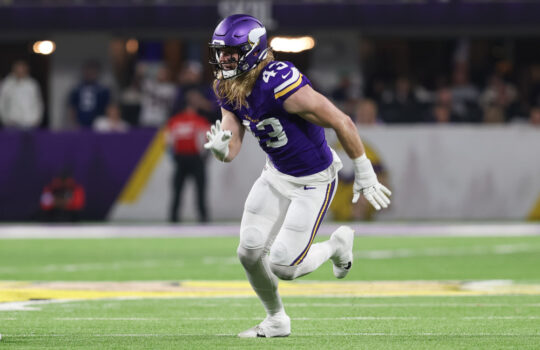



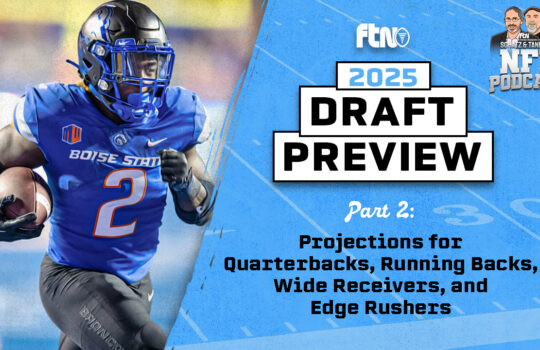

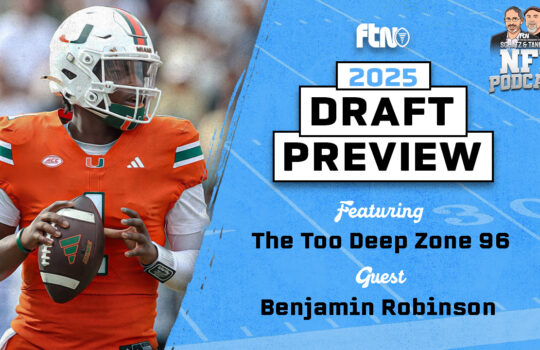





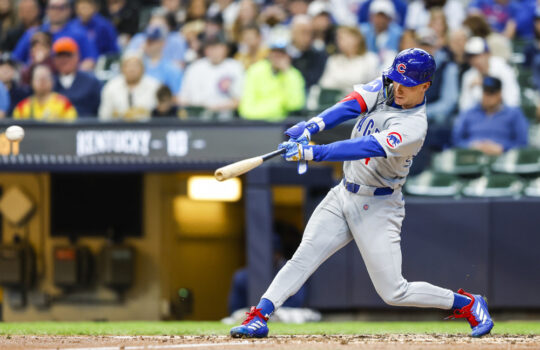

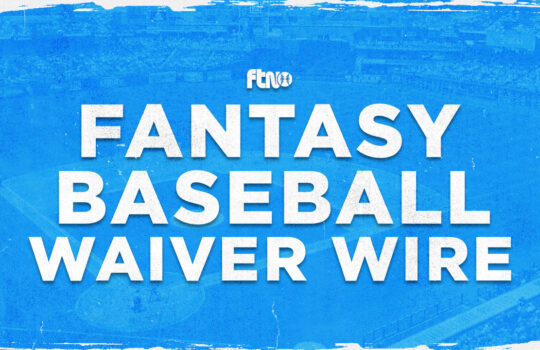

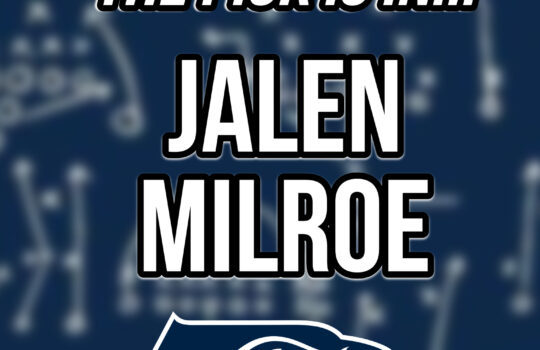

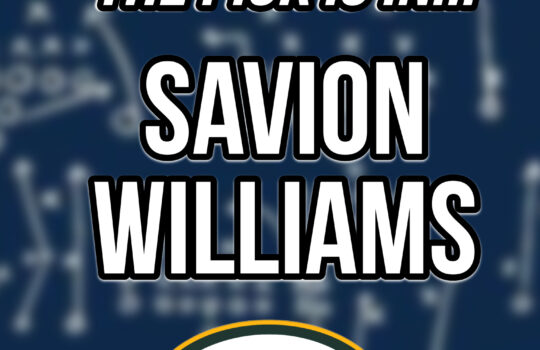
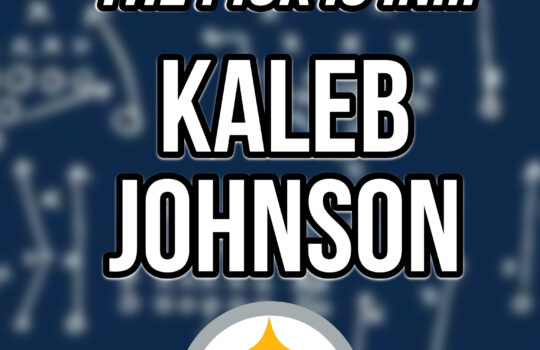

 New York Jets
New York Jets  New England Patriots
New England Patriots  Miami Dolphins
Miami Dolphins  Buffalo Bills
Buffalo Bills  Pittsburgh Steelers
Pittsburgh Steelers  Cleveland Browns
Cleveland Browns  Cincinnati Bengals
Cincinnati Bengals  Baltimore Ravens
Baltimore Ravens  Tennessee Titans
Tennessee Titans  Jacksonville Jaguars
Jacksonville Jaguars  Indianapolis Colts
Indianapolis Colts  Houston Texans
Houston Texans  Las Vegas Raiders
Las Vegas Raiders  Los Angeles Chargers
Los Angeles Chargers  Kansas City Chiefs
Kansas City Chiefs  Denver Broncos
Denver Broncos  Washington Commanders
Washington Commanders  Philadelphia Eagles
Philadelphia Eagles  New York Giants
New York Giants  Dallas Cowboys
Dallas Cowboys  Minnesota Vikings
Minnesota Vikings  Green Bay Packers
Green Bay Packers  Detroit Lions
Detroit Lions  Chicago Bears
Chicago Bears  Tampa Bay Buccaneers
Tampa Bay Buccaneers  New Orleans Saints
New Orleans Saints  Carolina Panthers
Carolina Panthers  Atlanta Falcons
Atlanta Falcons  San Francisco 49ers
San Francisco 49ers  Seattle Seahawks
Seattle Seahawks  Los Angeles Rams
Los Angeles Rams  Arizona Cardinals
Arizona Cardinals 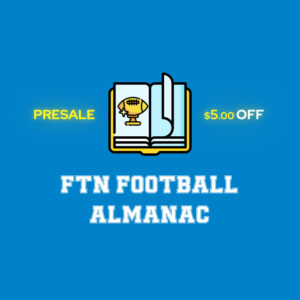
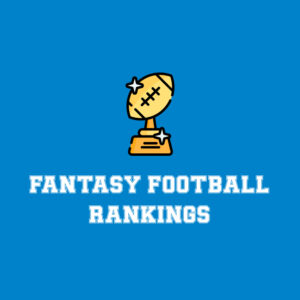
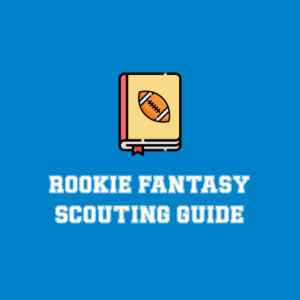
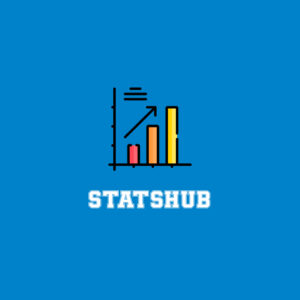





 Boston Celtics
Boston Celtics  Brooklyn Nets
Brooklyn Nets  Philadelphia 76ers
Philadelphia 76ers  New York Knicks
New York Knicks  Toronto Raptors
Toronto Raptors  Chicago Bulls
Chicago Bulls  Detroit Pistons
Detroit Pistons  Milwaukee Bucks
Milwaukee Bucks  Cleveland Cavaliers
Cleveland Cavaliers  Indiana Pacers
Indiana Pacers  Orlando Magic
Orlando Magic  Atlanta Hawks
Atlanta Hawks  Charlotte Hornets
Charlotte Hornets  Miami Heat
Miami Heat  Washington Wizards
Washington Wizards  Denver Nuggets
Denver Nuggets  Minnesota Timberwolves
Minnesota Timberwolves  Oklahoma City Thunder
Oklahoma City Thunder  Portland Trail Blazers
Portland Trail Blazers  Utah Jazz
Utah Jazz  LA Clippers
LA Clippers  Golden State Warriors
Golden State Warriors  Los Angeles Lakers
Los Angeles Lakers  Phoenix Suns
Phoenix Suns  Sacramento Kings
Sacramento Kings  Dallas Mavericks
Dallas Mavericks  Houston Rockets
Houston Rockets  Memphis Grizzlies
Memphis Grizzlies  New Orleans Pelicans
New Orleans Pelicans  San Antonio Spurs
San Antonio Spurs 
